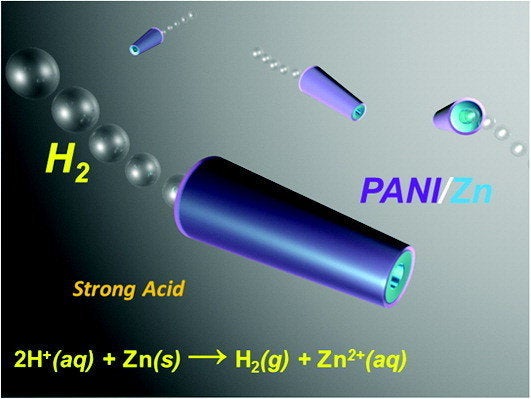
By: InnovationNewsDaily Staff
Published: 02/08/2012 08:06 PM EST on InnovationNewsDaily
Perhaps a certain magical school bus could have gotten a boost from this new invention while visiting the human digestive system. Researchers have created "microrockets" powered by bubbles of hydrogen present in strong acids such as stomach acid. Each rocket is about 10 nanometers long, about a thousandth as wide as a human hair. Someday such a motor could measure pH in extreme environments or deliver drugs to specific places in the human body, the researchers wrote in their paper, published Jan. 18 in the Journal of the American Chemical Society.
Previously the same team of nanotechnology researchers, from the University of California, San Diego, created tiny rockets that were lined with platinum and required hydrogen peroxide for fuel. For these new devices, the researchers replaced the platinum with zinc, and the rockets don't need a separate fuel. When one of the rockets is immersed in an acid, a chemical reaction happens along the zinc surface that creates hydrogen bubbles, which propel the rocket forward at speeds up to 1,050 nanometers per second — quite fast, when compared with the size of the rocket.
How fast the little zoomer goes depends on how acidic its surroundings are. More acidic liquids have more available hydrogen, so the device moves faster.
The newer microrocket should be better suited to medical applications, the researchers wrote, because zinc is safer for internal use. People already have small amounts of zinc in their bodies, where it works in the immune and nervous systems.
The rockets work until their zinc layer is used up, from 10 seconds to two minutes. Less acidic environments and thicker zinc layers help them last longer.
The researchers showed they could steer the rockets and use them to pick up and drop off a 5-nanometer-wide magnetic sphere. However, they needed to add a magnetic layer to the rockets to control them, and this slowed them down by about 28 percent. Running in a sample of acidified human blood also slowed the rockets, as hydrogen tended to gather in large, infrequent bubbles in the blood.